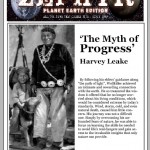
TAKE IT OR LEAVE IT…Jim Stiles ‘Return to Abajo Peak. An Autumn’s View’‘ Searching for Solitude at the Summit‘ SOWING CLOVER…Tonya Stiles ‘Cheap Lives in a Sacred Economy W I N D O W S A c r o s…
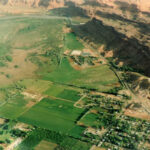
This issue features Moab and Arches and a ways upstream and down the Colorado River. Almost all of them are from the early 1990s thanks to Paul, but a few of the Arches images date back to the late 1970s and early 1980s via those Arches pot patrols.
These photographs are especially notable, because they show just how much the town and the river have changed over the last few decades. So strap yourself in and take a flight…Swanstrom is a damn good pilot…
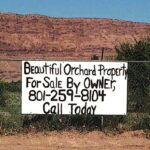
I had been ranting for years about the impacts an Industrial Tourism economy could create. My pleas fell on deaf ears, especially with the mainstream environmental community. Organizations like the Southern Utah Wilderness Alliance (SUWA) embraced the change and even devoted an entire issue of its newsletter praising the amenities economy as a clean, non-polluting way to bring economic prosperity to areas that had previously depended on the extractive industries to survive. What they failed to consider was that while coal mining and oil and gas exploration and ranching could scrape bare the skin of the rural West, a massive monolithic tourism economy would eventually bare and destroy its very soul.
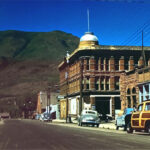
From Edward Abbey’s “The Journey Home”
“The town of Telluride was actually discovered back in 1957, by me, during a picnic expedition into the San Miguel Mountains of southwestern Colorado. I recognized it at once as something much too good for the general public. For thirteen years I kept the place a secret from all but my closest picnicking cronies. No use: I should have invested everything I had in Telluride real estate. In 1970 a foreigner from California named Joseph T. Zoline moved in with $5 million and began the Californica-tion of Telluride. Formerly an honest, decayed little mining town of about good souls, it is now a bustling whore of a ski resort with a population of 1,500 and many more to come. If all goes badly, as planned…
… Men weep, men pray and kneel, but money talks. Money walks and talks and gets things done.
— EA

I was a newly initiated Boy Scout, officially a Tenderfoot, and had traveled with Troop 246 to a summer Boy Scout camp at Rough River, Kentucky. We had planned a canoe trip for the next day, but early that afternoon, we set up camp in an open field. As I sat in the tall grass chatting with my pals, I suddenly felt an uncomfortable itch emanating from the most sensitive part of the male anatomy. I said nothing at first, and was not about to share my problem with my buddies. Besides, I was a Boy Scout. It was still okay to be stoic, to admire stoicism, and endure discomfort bravely, and quietly, like Gary Cooper or Jimmy Stewart might do. I said nothing…
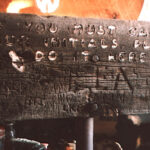
For decades, the iconic routed wooden signs, in national parks across America, were a familiar sight to tourists. They were works of art…
But leave it to the government to find one. Someone in the Department of Transportation, his/her identity lost to history, decided to take a look at the park signs and saw red flags everywhere…
“These signs! These signs are NOT in compliance with federal highway safety standards!!!”
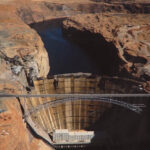
If you didn’t live through the 1950s, there’s a commonly held but false impression that ‘nothing happened’ during the decade… But the decade of the ‘50s initiated the groundwork, literally, for what was to come. After a decade of the Great Depression and four years of world war. Growth was inevitable, but the explosive growth was stunning…
In order for the arid Southwest to grow far beyond anything that could be called “sustainable,” proponents needed two rare commodities for the arid deserts — water and power. Projects like Glen Canyon Dam and the Powell Reservoir were planned and built with that goal in mind.
Damn sustainability…full speed AHEAD.
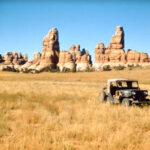
Alan “Tug” Wilson isn’t exactly a household name to most Zephyr readers. But it should be. While he may not be instantly recognizable, many lovers of Canyonlands and Arches National Parks will recognize his father. Tug was blessed to be the only son of Bates Wilson. In 1949, Bates became the first official superintendent of “The Arches,” when it was still a national monument. Just a year after his arrival, Bates was introduced to the vast untouched landscape to the west of Moab— and north and south of the little town as well. The canyon Country of southeast Utah was still an almost untouched landscape, known only to the ranchers and cowboys of Scorup/Sommerville Ranch, and a handful of intrepid explorers. The land lay empty for centuries…
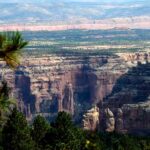
I have a granddaughter about the same age as this little one, and that makes this child very close, and very dear to me. I can’t explain it, but I’m carried away with deep emotion.
I realize that for a thousand years this little one has slept in the shadow of this rock shelter, and now, quite by accident, I’m holding her little face in my hands. It makes me wonder, what twist of fate has brought us together here this morning. How did this happen, and why? I have a hundred questions. Who was this child? What was her name? How did she die? Why was she buried here?

Our little piece of The American Dream was one of the first subdivisions to take root in east Louisville, Kentucky, more than 60 years ago. Glen Meade Road was a solitary finger of small two-bedroom brick homes in an area that had been farm land for almost two centuries. We were surrounded by dense woods and wheat fields, bottomless swamps and a pumpkin patch.
During the summer of 1954, we made weekly trips to Glen Meade to see how our home was progressing. The road itself was a mud hole that was last on the list of “things to do.”
If I recall, we paid about $12,000 for our little two bedroom home.